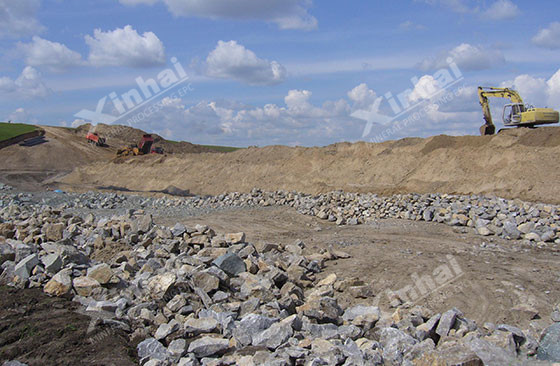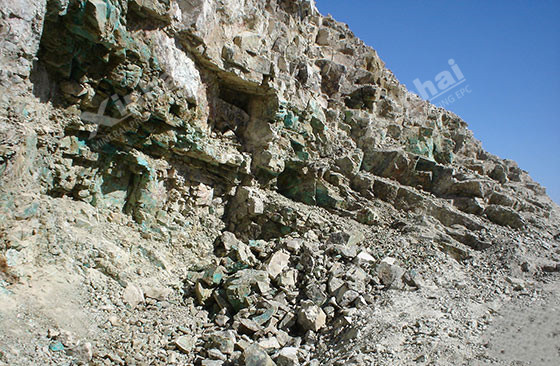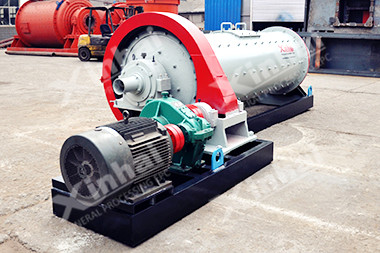- Home
- About
-
Mineral Processing EPC+M+O

Providing optimized solutions for your mine, one-stop service for mineral processing plant!
View details -
Product
- Grinding
- Classifying
Grinding & Classifying
- Flotation
- Gravity Separation Equipment
- Magnetic Equipment
- Gold Extraction Equipment
- Washing Equipment
Separating Process
- Thickening
- Dewatering Machine
Thickening & Dewatering
- Accessories
- Auxiliary Product
Consumables

Xinhai mineral processing equipment mainly include: grinding equipment, flotation equipment, dewatering equipment, magnetic separation equipment, and so on. Some of the equipment is Xinhai independent research and development, and has been awarded national patent. View details
-
Solutions
- Gold Tailings
- Tailings
Tailings

Gold CIP Production Line adsorbs gold from cyaniding pulp by active carbon including 7 steps: leaching pulp preparation, cyaniding leaching, carbon adsorption, gold loaded carbon desorption, pregnant solution electrodeposit, carbon acid regeneration, leaching pulp. View details
- Case
-
News
- Contact
Global Mining Industry Analysis: Trends, Challenges, and Opportunities in 2025
2025-04-18 XinHai Views (28)The global mining industry is a vital component of the world economy, supplying raw materials for construction, manufacturing, and energy production. As of 2025, the industry is valued at approximately $2.4 trillion, with forecasts predicting growth to $3 trillion by 2029 at a compound annual growth rate (CAGR) of 5.7%. This growth is propelled by rising demand for minerals and metals, especially in emerging economies, and the global shift toward sustainable energy solutions. However, the industry grapples with significant challenges, including environmental concerns, geopolitical instability, and economic volatility. This analysis provides an overview of the industry's current state, key trends, challenges, and major players.
1. Market Size and Growth Projections
The mining sector has experienced consistent growth, with revenues reaching $711 billion in 2022. However, profit margins have narrowed due to rising operational costs and economic uncertainties. Looking ahead, the market is expected to expand, driven by surging demand for critical minerals such as lithium, cobalt, and nickel—key components in renewable energy technologies. In 2022, critical-mineral deals dominated mergers and acquisitions (M&A), comprising 66% of total activity. Despite this optimism, a potential revenue dip is anticipated in 2023 as demand stabilizes and coal supply increases, with coal alone accounting for 28% of industry revenues in 2022—the highest share since 2010.

2. Key Commodities and Production Trends
Iron Ore, Coal, and Copper: These commodities remain the backbone of global mining. China, Indonesia, and India lead coal production, while China also dominates iron ore and rare earth elements, producing nearly 69% of the world’s rare earths in 2023.
Critical Minerals: The energy transition has heightened demand for lithium, cobalt, and graphite. China controls significant processing capacities—approximately 60% for lithium, over 70% for cobalt, and nearly 70% for graphite—though other nations are increasing production to diversify supply chains.
Production Volume: Global mine output hit 17.3 billion tonnes in 2020, up 52% from 2000, with metal ores expected to grow rapidly due to electrification demands.
3. Major Challenges
The mining industry faces multifaceted obstacles:
Environmental Impact: Mining contributes to land degradation, water pollution, and carbon emissions. Pressure is mounting to adopt sustainable practices, including electrification, renewable energy use, and urban mining (recycling urban waste).
Geopolitical Risks: The ongoing conflict in Ukraine has disrupted supply chains, notably for phosphate and potash, where Russia accounts for 17% and 20% of global exports, respectively, prompting calls for diversified sourcing.
Economic Uncertainty: Commodity price volatility threatens profitability, with net profit margins falling from 25% in 2010 to 11% in 2023 due to rising costs and market fluctuations.
Regulatory and Social Pressures: Stricter environmental laws and community resistance, particularly in sensitive regions, complicate operations. A talent shortage also looms, as the industry struggles to attract younger workers amid negative perceptions.

4.Key Players and Market Dynamics
Several major companies dominate the global mining landscape:
BHP Group (Australia): With a market capitalization of $146 billion in 2024, BHP leads in iron ore and copper production.
Rio Tinto (UK/Australia): A pioneer in iron ore, aluminum, and copper, Rio Tinto emphasizes sustainable mining practices.
Glencore (Switzerland): The top revenue generator in 2023 ($218 billion), Glencore excels in commodity trading.
Vale S.A. (Brazil): A key player in iron ore and nickel, Vale is pivoting toward critical minerals for the energy transition.
These firms are investing heavily in automation, artificial intelligence (AI), and sustainable technologies. AI enhances predictive maintenance and resource optimization, while blockchain improves supply chain transparency.
5.Impact of Global Events
COVID-19 Pandemic: The pandemic caused supply chain disruptions, reduced demand for some minerals, and led to temporary mine closures. Production rebounded in 2022, showcasing the industry’s resilience.
Ukraine Conflict: The war has impacted Eastern European production and transportation, particularly for coal and metals, increasing geopolitical risks and underscoring the need for diversified supply chains.
6.Conclusion
The global mining industry stands at a pivotal moment, tasked with meeting escalating mineral demands—especially for the energy transition—while addressing environmental and geopolitical challenges. Growth is on the horizon, supported by technological innovation and sustainability efforts, but success hinges on the industry’s ability to adapt, diversify, and reduce its ecological footprint.
Gold Mining Equipment Costs: A Down-to-Earth Guide
Gold mining? It's a money - guzzling industry, and let me tell you, the cost of equipment can really make or break your profitability. I've been around the block in this business, and I'm here to give you the lowdown on all the costs related to different gold mining equipment.... [more]
No Next
Related Article
- Phosphate Ore Processing and Beneficiation Plant Design: A Comprehensive Engineering Approach
- Titanium Ore Beneficiation: Navigating Global Supply Shifts with Advanced Processing Solutions
- Lithium Ore Processing Methods: Efficient Extraction Techniques for Battery-Grade Lithium
- Improving Graphite Ore Processing for Efficiency and Purification
- Chrome/Chromite mining company in South Africa
- Efficient Chrome Ore Gravity Processing Plants: Cost-Effective Solutions for Mineral Recovery
- What machines are used in lithium processing?
- Manganese Ore Processing Methods and Equipment
- Cutting-Edge Lithium Processing: Advanced Techniques for Beneficiation and Refining
- Silica Sand Processing: Turning Sand into Industrial Gems
Mineral Processing EPC
Solutions
CONTACT US
- Tel: 0086 15901320633
- Fax: 0086 10 59621207
- Email: mhxu@xinhaimining.net
© 2017 Shandong Xinhai Mining Technology & Equipment Inc. Technical Support: Beijing Xinhulian Technology Co., Ltd.
Factory Address: No. 188, Xinhai Street, Fushan high-tech industrial development district, Yantai, Shandong, China






